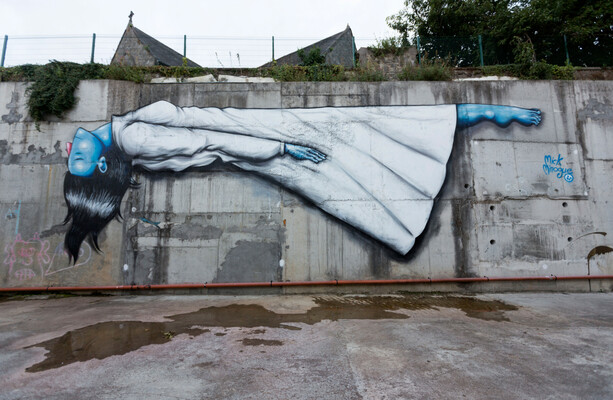Copyright thejournal

We need your help now Support from readers like you keeps The Journal open. You are visiting us because we have something you value. Independent, unbiased news that tells the truth. Advertising revenue goes some way to support our mission, but this year it has not been enough. If you've seen value in our reporting, please contribute what you can, so we can continue to produce accurate and meaningful journalism. For everyone who needs it. One-off amount I already contribute Sign in. It’s quick, free and it’s up to you. An account is an optional way to support the work we do. Find out more. Investigates Investigates Money Diaries The Journal TV Climate Crisis Cost of Living Road Safety Newsletters Temperature Check Inside the Newsroom The Journal Investigates Daft.ie Property Allianz Home The 42 Sport TG4 Entertainment The Explainer A deep dive into one big news story Sport meets news, current affairs, society & pop culture have your say Or create a free account to join the discussion Advertisement More Stories Street art by Mick Minogue in Kilkenny, pictured in 2013, depicting Alice Kyteler.Alamy Stock Photo oiche shamhna Halloween histories Step inside the stories of Ireland’s (alleged) witches Dr Niav Gallagher of the Dictionary of Irish Biography looks at the history of witchcraft in Ireland. 7.46am, 31 Oct 2025 Share options ‘But now the wind drops, dust settles; thereupon There lurches past, his great eyes without thought Under the shadow of stupid straw- pale locks That insolent fiend Robert Artisson’ - W. B. Yeats, ‘Nineteen hundred and nineteen’ IN PRE-CHRISTIAN Ireland, four festivals celebrated the changing seasons: Imbolc signalled the beginning of spring and is now celebrated as St Brigid’s Day, Bealtaine marked the start of summer and Lughnasa ushered in the autumnal harvest. Last, but not least, Samhain celebrated the change from the light of summer to the dark of winter. Samhain was also the time when the barrier between this world and the Otherworld was at it thinnest, allowing spirits to pass through to our realm, where they were appeased with offerings of food and drink. Traces of Samhain remain in the celebration we know today as Hallowe’en: bonfires, feasting, dressing up and, of course, ghost stories. So, in the words of Bram Stoker’s Dracula, ‘enter freely and of your own will’ and let the Dictionary of Irish Biography introduce you to some of the (alleged!) witches, sorcerers and changelings from our island’s history. The first woman we know was accused of witchcraft In the last lines of ‘Nineteen hundred and nineteen’, W. B. Yeats conjured an image of the lovelorn Lady Kyteler gifting feathers and cockscombs to the ‘insolent fiend Robert Artisson’. Yeats knew his history; Alice Kyteler is the first woman known to have been accused of witchcraft in Ireland, in 1324, with ‘Robert Artisson’ the demon she supposedly made offerings to. Married four times in total, Kyteler was accused of maleficium (the ability to cause harm through occult powers supplied by the devil) by her vengeful stepchildren, who had been disinherited in favour of Kyteler’s firstborn son, William Outlaw, and were convinced that she had used supernatural powers to first beguile and then dispose of her husbands. After an inquiry by the bishop of Ossory, Richard Ledrede, Kyteler, her son William and ten other Kilkenny men and women were declared sorcerers and heretics. The group was accused of engaging in rituals that incorporated the skull of a decapitated robber, candles made from human fat and animal sacrifice. ‘Robert Artisson’ was identified as Kyteler’s incubus (that is, that she traded sexual favours with him in return for power and wealth). A plaque in Kilkenny commemorating Alice Kyteler.Alamy Stock Photo Alamy Stock Photo The maid who was caught in the crosshairs Although Kyteler managed to escape, her maidservant Petronilla de Midia was less fortunate: she was tortured until she confessed to all charges and was then flogged and sentenced to death, becoming the first person in Ireland burnt at the stake for heresy. The ‘witch of Youghal’ Another alleged witch, Florence Newton, was put on trial in Youghal in 1661. Servant Mary Langdon accused Newton of cursing her with a kiss, after which she suffered violent fits and vomited needles, straws and pins. Advertisement After several witnesses corroborated Langdon’s story, Newton was imprisoned and then accused of bewitching a man who tried to teach her the Lord’s prayer (it was believed witches couldn’t learn the prayer). Newton claimed she kissed Jones’s hand in gratitude but on his return home he fell ill and died twelve days later. On his deathbed he supposedly could muster only enough energy to cry out the name ‘Newton’. We don’t know the outcome of her trial, though she was probably convicted and either hanged or burned at the stake. Eight Presbyterian women Fifty years later, in March and September 1711, the Islandmagee witchcraft trial took place in Carrickfergus, Co. Antrim. Eight Presbyterian women were accused of bewitching both Ann Haltridge, who died of her enchantment, and then her niece Mary Dunbar. They were found guilty, and sentenced under the 1586 Irish Witchcraft Act to one year’s imprisonment and four stints in the pillory. A Tipperary woman in 1895 Finally, we have the tragic story of Bridget Cleary from Ballyvadlea, Co. Tipperary. In March 1895, Cleary fell ill with bronchitis and the local doctor and curate were summoned. The curate came and said Mass, but because the doctor was delayed for several days, Cleary’s husband and father brought the ‘fairy doctor’ Denis Ganey to the house. Rumours soon began to circulate that the ‘real’ Bridget Cleary had been abducted by fairies and a changeling left in her place. A group of male relatives and neighbours sought to ‘cure’ her. They doused her with urine and held her over the open fire in the kitchen. Although pronounced recovered, the following evening Michael Cleary knocked his wife to the ground, violently interrogated her, set fire to her clothes threw oil from the lamp over her, burning her to death. He then buried his wife’s body in a shallow grave some distance from their home. In the following days, Michael kept up a ‘vigil’ at the nearby ringfort of Kylenagranagh, saying that his wife would ride out from it among a troop of fairies, mounted on a white horse. When news of Bridget’s disappearance reached the local Royal Irish Constabulary, they quickly investigated and found her body on 22 March 1895. Michael Cleary was found guilty of manslaughter and spent fifteen years in prison, while Bridget Cleary was buried in Cloneen cemetery by members of the RIC, under cover of darkness, on 27 March; most of her own family were in Clonmel prison at the time. Hard though it may be to believe, the Witchcraft Act of 1735 remained on the Irish statute books until 2006, when it was finally repealed. Dr Niav Gallagher is a medieval historian. She joined the DIB team in 2018, researching and writing biographies as well as curating the database of prospective DIB entries. Niav is co-editor of Irish lives in America (RIA, 2021), a collection of fifty biographies of Irish emigrants to the US, with Liz Evers. Readers like you are keeping these stories free for everyone... A mix of advertising and supporting contributions helps keep paywalls away from valuable information like this article. Over 5,000 readers like you have already stepped up and support us with a monthly payment or a once-off donation. Support The Journal Dr Niav Gallagher Viewcomments Send Tip or Correction Embed this post To embed this post, copy the code below on your site Email “Halloween histories: Step inside the stories of Ireland’s (alleged) witches”. Recipient's Email Feedback on “Halloween histories: Step inside the stories of Ireland’s (alleged) witches”. Your Feedback Your Email (optional) Report a Comment Please select the reason for reporting this comment. Please give full details of the problem with the comment... This is YOUR comments community. Stay civil, stay constructive, stay on topic. Please familiarise yourself with our comments policy before taking part. Leave a Comment Submit a report Please help us understand how this comment violates our community guidelines. Damaging the good reputation of someone, slander, or libel. Racism or Hate speech An attack on an individual or group based on religion, race, gender, or beliefs. Trolling or Off-topic An attempt to derail the discussion. Inappropriate language Profanity, obscenity, vulgarity, or slurs. Advertising, phishing, scamming, bots, or repetitive posts. Please provide additional information Thank you for the feedback Your feedback has been sent to our team for review. Leave a commentcancel Newly created accounts can only comment using The Journal app. This is to add an extra layer of security to account creation. Download and sign into the app to continue. Access to the comments facility has been disabled for this user View our policy ⚠️ Duplicate comment Post Comment have your say Or create a free account to join the discussion Irish History oiche shamhna Witchcraft Accusations News in 60 seconds The Morning Lead Over five thousand children set to spend Halloween in emergency accommodation The Daily Poll How will you spend Halloween? Moltóirí an óige Moglaí Bap agus DJ Próvaí ó Kneecap ina moltóirí ar chomórtas rap cheol an Oireachtais 14 mins ago Good Morning The 8 at 8: Friday 18 mins ago Extreme Weather Hurricane Melissa has killed nearly 50 people so far 35 mins ago Front Pages 'The Royal formerly known as Prince': UK newspapers react to the removal of Andrew's title 37 mins ago book extract Carl Kinsella: ‘I’m sorry, sir. I am Irish. I have no idea what’s going on.’ Andrew Mountbatten Windsor UK's King Charles strips Andrew of his prince title and royal accommodation Households have one week left to file Local Property Tax returns - here's how to calculate it Dame Street Man in his 30s dies after being struck by truck in overnight Dublin crash Trick or Treat Wind and rain to clear up just in time for Halloween night more from us Investigates Money Diaries The Journal TV Journal Media Advertise With Us About FactCheck Our Network FactCheck Knowledge Bank Terms & Legal Notices Terms of Use Cookies & Privacy Advertising Competition more from us TV Listings GAA Fixtures The Video Review Journal Media Advertise With Us Our Network The Journal FactCheck Knowledge Bank Terms & Legal Notices Terms of Use Cookies & Privacy Advertising Competition © 2025 Journal Media Ltd Terms of Use Cookies & Privacy Advertising Competition Switch to Desktop Switch to Mobile The Journal supports the work of the Press Council of Ireland and the Office of the Press Ombudsman, and our staff operate within the Code of Practice. You can obtain a copy of the Code, or contact the Council, at https://www.presscouncil.ie, PH: (01) 6489130, Lo-Call 1800 208 080 or email: mailto:info@presscouncil.ie Report an error, omission or problem: Your Email (optional) Create Email Alert Create an email alert based on the current article Email Address One email every morning As soon as new articles come online



